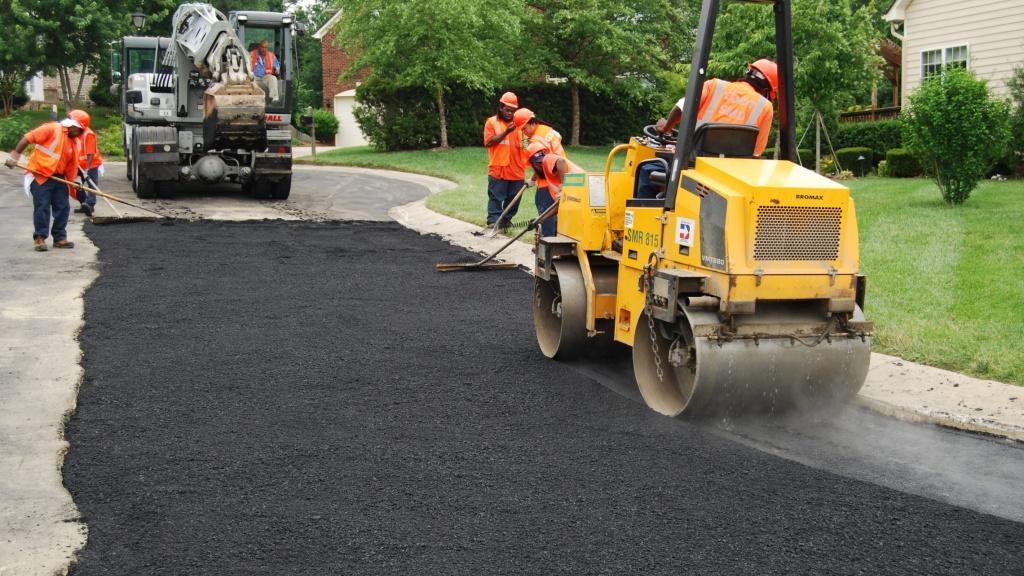A well-built road can last decades, but only if it’s maintained correctly. Poor upkeep, drainage issues, and high traffic loads can all cut its life short. Extending the life of a road surface isn’t about expensive treatments, it’s about consistency, attention to detail, and using the right materials at the right time.
Whether you manage public roads or private access routes, here’s how to make your surface last longer and perform better.
Start with a Solid Foundation
Every long-lasting road begins below the surface. If the sub-base is weak or poorly compacted, cracks and potholes will appear much sooner. Before laying any tarmac or asphalt, ensure the ground has been thoroughly prepared. This includes proper compaction, removing soft spots, and choosing the right thickness for the base layers.
Skimping on the foundation might save money upfront, but it almost always leads to early surface failures.
Prioritise Drainage from Day One
Water is the number one enemy of road surfaces. When it seeps into cracks or pools on the surface, it weakens the materials and accelerates wear. Proper drainage design should be part of the initial surfacing plan, not an afterthought.
Use sloped gradients to guide water off the surface. Include gullies, channels, or soakaways to carry it away safely. If you’re resurfacing an existing road, make sure current drainage systems are clear and functioning well before any new layers are laid.
Choose the Right Surfacing Material
Not all surfaces are created equal. While tarmac is widely used due to its flexibility and quick installation, it’s important to pick the right type based on traffic levels and local conditions.
For roads that see regular heavy vehicles or frequent turning, harder-wearing mixes like SMA (stone mastic asphalt) can hold up longer. Light residential roads may only need standard tarmac. Always match the surface to its real-world use.
If you're considering an upgrade, professional road resurfacing in Bournemouth offers durable solutions tailored to your needs.
Stick to a Maintenance Schedule
Don’t wait for visible damage to act. Proactive maintenance is the key to a long-lasting surface. Regular inspections can spot early signs of cracking, rutting, or water damage before they turn into bigger issues.
Typical maintenance tasks include:
-
Crack sealing
-
Patch repairs
-
Edge trimming
-
Clearing drains and gullies
-
Repainting road markings
Scheduling these every 6 to 12 months, depending on use, will significantly increase the surface's lifespan and reduce the need for full resurfacing.
Keep Heavy Loads in Check
Heavy traffic, especially trucks or machinery, can speed up surface deterioration. If your road isn't built to carry regular loads like these, it’ll wear out much faster. Where possible, limit heavy vehicles or distribute their impact using reinforced layers in high-traffic areas.
On commercial or construction sites, install designated load routes with stronger sub-bases and clear signage to guide vehicles. Small measures like this reduce surface stress and extend usability.
Prevent Weeds and Plant Damage
Over time, grass and weeds can grow through cracks, especially along road edges. This not only looks messy but weakens the tarmac structure and invites water infiltration.
Use weed barriers during installation and follow up with regular trimming or treatment. Keep vegetation away from road edges, kerbs, and joints. It’s a simple maintenance task that prevents long-term damage.
Repair Small Problems Quickly
One of the biggest mistakes in road care is ignoring minor issues. A small crack or surface dip might not seem urgent, but it can grow fast under rain, frost, and traffic. Left untreated, it often leads to potholes or structural damage.
Patching small areas as soon as damage appears is far cheaper than resurfacing entire sections. Make it a habit to walk or inspect the road every few months, especially after winter or storms.
Recoat with Surface Dressing
Over time, even solid tarmac can lose its top layer, exposing aggregates and reducing skid resistance. Surface dressing, a layer of bitumen and chippings, helps restore grip and protects the base layers underneath.
This method is affordable and quick to apply. It’s best done every 7 to 10 years depending on the road’s use. It’s one of the most effective ways to refresh a surface and delay full replacement.
Don’t Ignore Road Edges
Edges are often the first part of a road to crumble. This usually happens because of soft shoulders, poor drainage, or lack of protection from encroaching grass and soil.
Use kerbs or edging materials to reinforce these areas. Keep nearby vegetation cut back and ensure water drains away properly. A solid edge not only looks better but also holds the rest of the road together.
Review the Surface After Extreme Weather
Freezing temperatures, heatwaves, and flooding can all damage road surfaces. After unusual weather, check the condition of the surface and surrounding drainage. Catching weather-related damage early reduces the risk of long-term issues and costly repairs.
Conclusion
Well-maintained roads don’t happen by accident. They’re the result of good planning, quality materials, and regular care. The more attention you pay to drainage, foundations, and surface upkeep, the longer your road will perform reliably.

